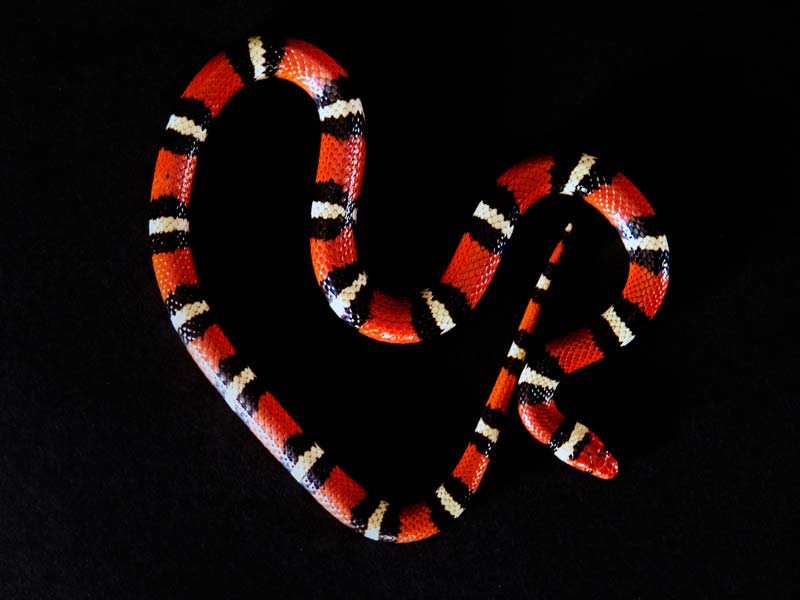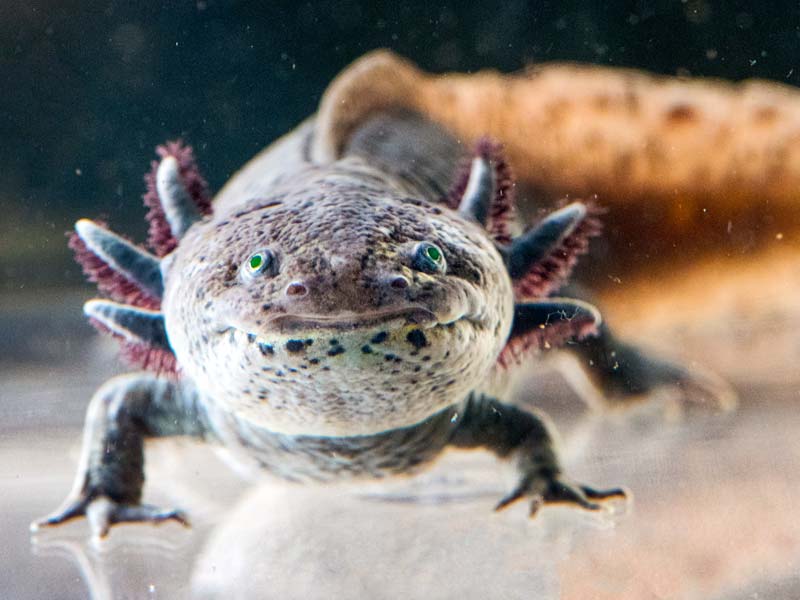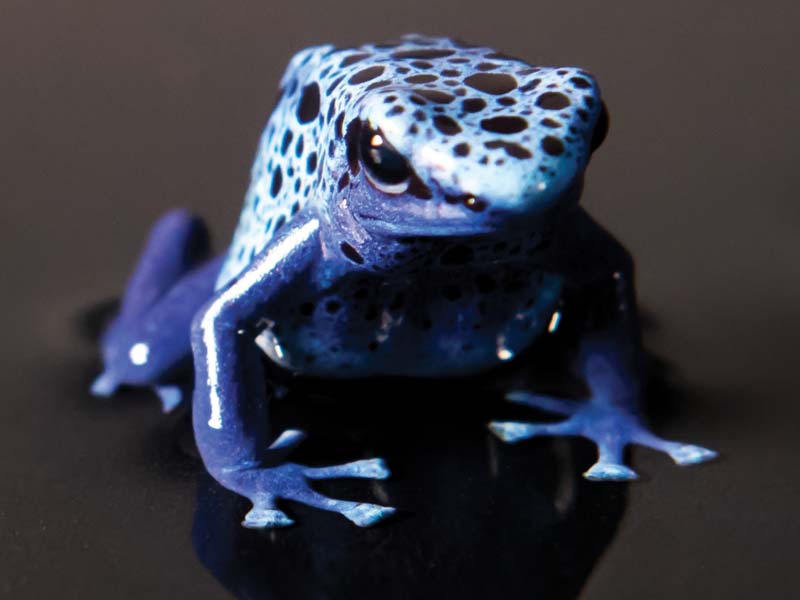Creature Feature: Animals at NCMNS
For immediate release ‐ June 02, 2019
Contact: Jessica Wackes, 919.707.9850. Images available upon request
“Enough live animals to be considered a mid-size zoo.”
That’s been a catchphrase and strong selling point of the Museum since it expanded in 2000. These “Living Collections” include animals that form the living aspect of exhibits (e.g. the state-record snapping turtle in the Mountains-to-Sea exhibit), as well as ambassador animals that can be seen in educational programs within the Museum (e.g. the stars of “Meet the Animals”) and across the state as part of the Museum’s extensive outreach efforts.
A visit by Chapel Hill-based professional photographer Tamara Lackey gave the Museum an opportunity to highlight some of its ambassador animals … in this case, a handful of charismatic reptiles and amphibians, each with its own story to tell.
 Scarlet kingsnake (Lampropeltis elapsoides)
Scarlet kingsnake (Lampropeltis elapsoides)
These harmless snakes have overlapping ranges with venomous Eastern coral snakes. Both employ “aposematic” or warning coloration, but the scarlet kingsnake is considered a “mimic” as it is not truly dangerous (but appearing so deters predators). People who grow up in the Southeast are probably familiar with the mnemonic “Red touch black, friend of Jack. Red touch yellow, kill a fellow.” Distinguishing between harmless scarlet and dangerous coral is where this comes in handy. The Living Conservatory houses a Stuart’s milk snake, another similarly tricolored mimic.
 Crested gecko (Correlophus ciliatus)
Crested gecko (Correlophus ciliatus)
Also called “eyelash” gecko, the species name “ciliatus” is Latin for cilia and refers to the crests over their eyes. Endemic to New Caledonia, this animal was thought to be extinct in the wild but was rediscovered in 1994 after a tropical storm. This gecko is often used in a tropical biodiversity program at the Museum. “It’s a good lizard for discussing adaptations,” says Martha Flanagan, Head of the Living Conservatory. “It’s strictly arboreal (lives in trees), exhibits tail autotomy (can cast off its tail when threatened), and lacks eyelids. In programs we frequently see it use its tongue to wet its eyeball.”
 Axolotl (Ambystoma mexicanum)
Axolotl (Ambystoma mexicanum)
This salamander is native to only two lakes in Mexico, one of which no longer exists, making them nearly extinct in the wild. But their species is being kept alive in the pet trade as well as in research laboratories, the latter a result of their unique ability to quickly regenerate lost limbs — as well as jaws, tail, spinal cord, skin and even parts of the brain, heart and lungs. One of their most unusual features is that they exhibit neoteny. While most amphibians lay their eggs in water and then undergo metamorphosis from a water dwelling larva to a land-dwelling adult, axolotls reach sexual maturity in their larval form and remain completely aquatic.
 Poison dart frog (family Dendrobatidae)
Poison dart frog (family Dendrobatidae)
These small neotropical frogs, native to Central and South America, also exhibit aposematic coloration, meaning their bright colors advertise the frog’s toxicity to predators. But poison dart frogs are not poisonous in captivity. Research has shown that some component of their diet confers the toxins to the frog — most likely this comes from beetles. In captivity, their diet doesn’t include insects with toxic chemicals. You can see several poison dart frogs on exhibit in the Tropical Connections Gallery.
For more information about our upcoming activities, conservation news and ground-breaking research, follow @NaturalSciences on Instagram, Twitter and Facebook. Join the conversation with #visitNCMNS.

